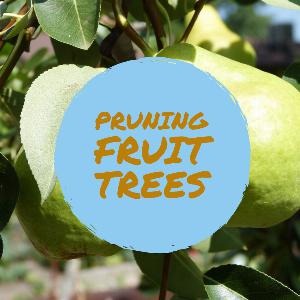Pruning your fruit tree increases the yield of fruit and only takes a few minutes a year. When setting out a new fruit tree, do no pruning the first season. The next season, prune the length of the branches back by about a third to encourage new growth. The third spring, choose three or four strong main branches, spaced evenly around the trunk, and having as wide an angle from the trunk as possible. Cut these back by one half, cutting just above a bud that is facing outward. Remove the rest of the branches just outside the collar of the branch, next to the trunk. The fourth spring, trim back the new growth on the ends of the main branches and the higher side branches by one half. Also remove any branches that have grown into the center of the tree. In future springs, cut back the branches that are growing into the center of the tree to about three inches in length. These little spurs will set on fruit, but won’t be long enough to cut off light and air to the center of the tree. Summer is an ideal time to thin out the crowded growth on older trees. The main idea in pruning older trees, especially ones that have been left untended for a long time, is to remove branches that grow back toward the center of the tree, or branches that rub against another branch. To decide which branch to keep, choose the one growing at the widest angle from the trunk, as it will be the strongest branch when loaded with fruit. Cut back side branches growing into the center of the tree to about three inches, which will open up the center of the tree to air and light. It’s easy to get carried away when pruning a very overcrowded tree, so a basic rule of thumb is to not remove more than twenty-five to thirty percent of the branches in any one year. Over pruning will give you lots of sucker growth on the branches. However, if pruned during the summer instead of spring, the branches will re-sprout much less vigorously. If you
do
get a lot of suckers, you can either remove them by hand, or they can be sprayed with a product called Sucker Stopper, which causes the sprouts to die back to the branch. Sucker stopper also controls suckers that spring up from the base of any tree without harming the parent plant.
Let's talk for a minute about pruning fruit trees . . .




